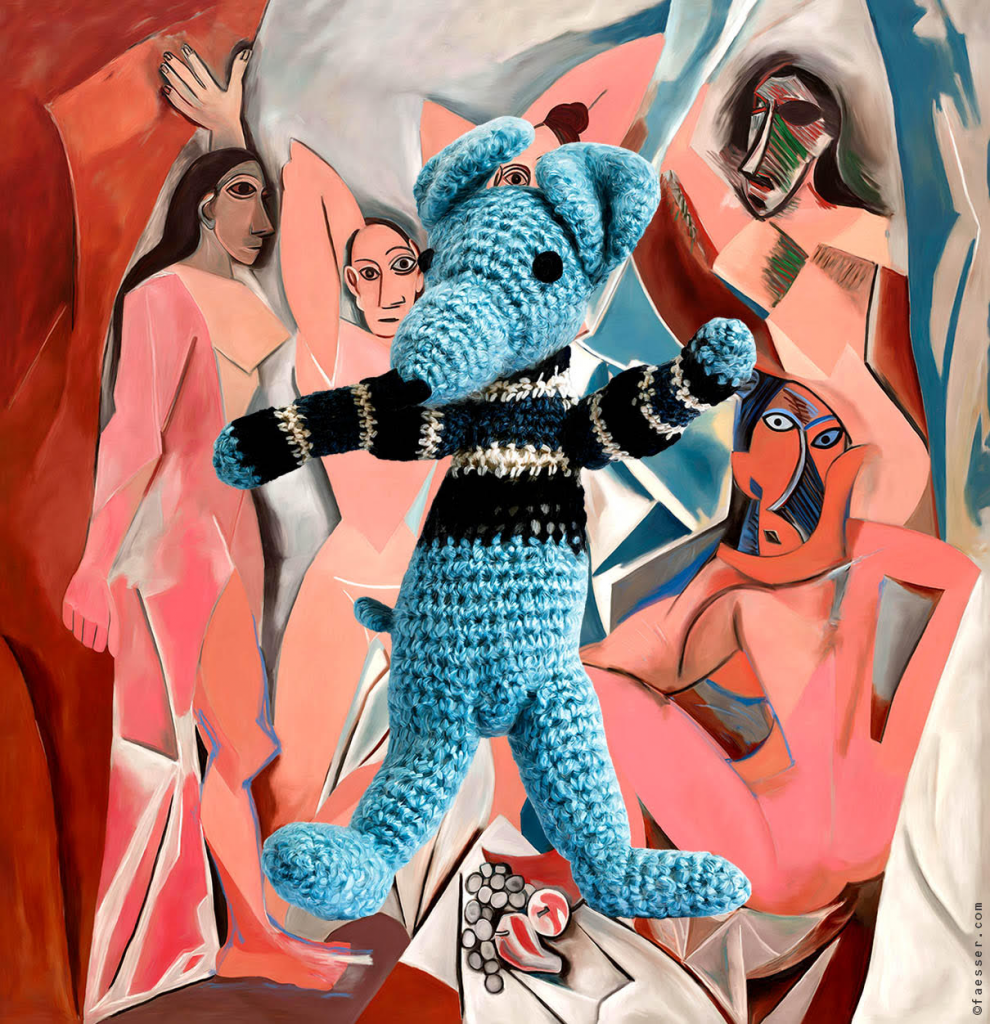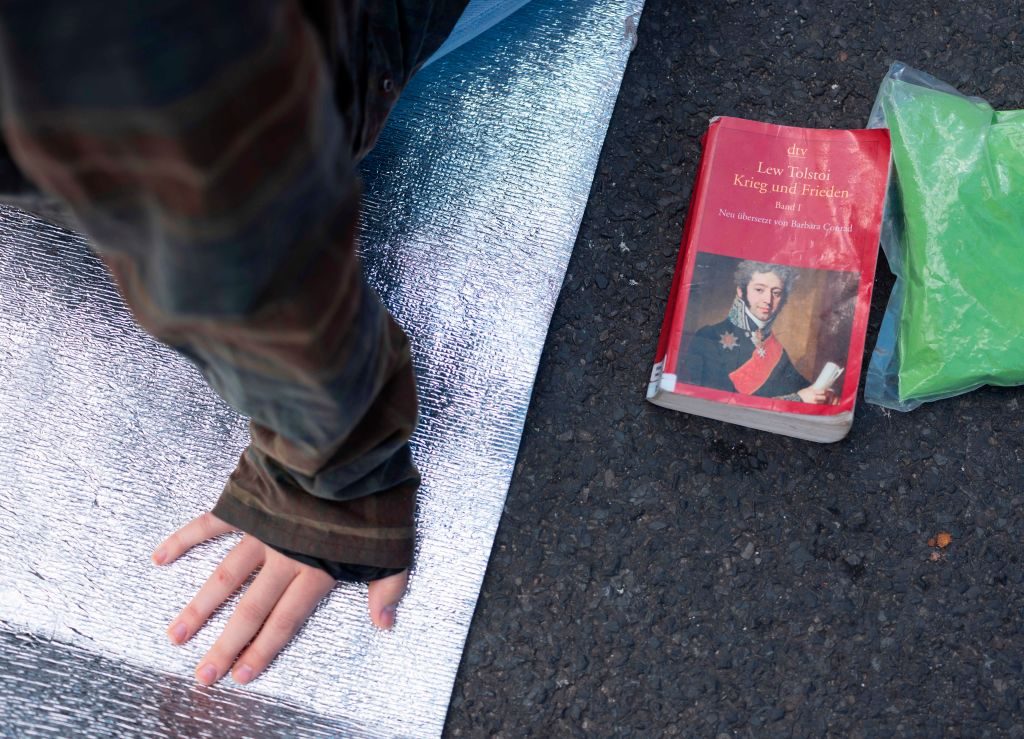Have you ever wondered what your rights are as an artist? There’s no clear-cut textbook to consult—but we’re here to help. Katarina Feder, a vice president at Artists Rights Society, is answering questions of all sorts about what kind of control artists have—and don’t have—over their work.
Do you have a query of your own? Email [email protected] and it may get answered in an upcoming article.
I’ve been enthralled by this whole GameStop stock frenzy. I bought a share and intend to keep it. I think the stock certificate might make a nice artwork in and of itself, well worth the $350 I paid for it. Do you foresee any copyright or other legal problems here?
What does it say about us that our generation’s Les Misérables moment was less about singing at the barricades and more about bros punching each other in the chest and buying stock in their favorite mall hangout? I suppose every generation gets the Jean Valjean it deserves.
Certificates used to be required as proof of ownership in a company, and every company’s stock certificate bore its own design (take a look at this book about the designs of Texaco’s over the years). Today, of course, stock ownership is registered and verified electronically thousands of times per second. Still, there are companies that allow you to purchase certificates more or less as a novelty item. In order to obtain a certificate for a stock you already own, just call your broker.
When it comes to copyright, however, things aren’t so simple. My research suggests that the designs might not qualify for intellectual property protection in the first place as I can find no reference to copyright on any of these designs, nor mention of human authorship. Scripophilists just tend to attribute the designs to companies.
I’ve come to understand these designs as similar to those for dollar bills. They contain elaborate illustrations to combat counterfeiting, but in the end, they’re contracts, not drawings. When Hans-Peter Feldmann won the Guggenheim’s $100,000 Hugo Boss Prize in 2011, he chose to display his winnings in $1 bills. The only problem was making sure that people didn’t steal them. But since you’re doing this with GameStop stock, currently down to $45 a share from its $350 high, I don’t foresee you facing a similar issue.

Roland Faesser, Saturday Night Fever. Courtesy of the artist.
I want to see if I can realize the above painting as a donation for a new museum of contemporary art. It’s a 16-by-16-foot digital repainting of Picasso’s Les Demoiselles d’Avignon featuring a knitted figure as John Travolta. The painting is called Saturday Night Fever; I stand to make no money from it.
Thank you for your help,
Roland Faesser
Thanks for your question, Roland, and for the permission to use your work. Travolta’s never looked better.
Were you a member of the Artist Rights Society, I would probably refer you to our Swiss colleagues at ProLitteris (assuming this museum is located in your native Switzerland). But considering that Swiss and US copyright laws are quite similar, let’s treat this case as if it were happening in the States for the sake of brevity.
When we consider fair use, we return to the well-established four-point test, which asks us to consider: 1. the intent of the new work, and whether it serves to replace, replicate, comment on, satirize, or transform the original; 2. the nature of the copyrighted work and its level of originality; 3. the amount borrowed from the original; and 4. the effect that the new work has on the market for the original.
What you have made is clearly not going to affect the market for the OG Picasso, should the Museum of Modern Art ever wish to sell it (which is inconceivable). But the fact that you appear to be using the entire painting as the basis for your work does put you at risk of running afoul of factor three. Plus, since the original remains visible and intact, your version might not be deemed sufficiently “transformative,” making it ineligible for a copyright of its own.
That said, some recent cases take a more permissive view than I’ve put forth above. A relevant and important one is Cariou v. Prince from 2013, which stipulates that one need not comment on the borrowed material to use it fairly. There is also Jeff Koons’s “Gazing Ball” series, which reproduces great works alongside a comedic artistic intervention, likely qualifying it as permissible satire.
In other words, these things can get a bit hairy. If you decide to proceed, just make sure you know that even though there is case law to support you, you might want to have a good lawyer on speed dial. Hey, maybe there’s a Travolta-loving art lawyer out there who would take the case pro bono.

The Temple of Dendur in the Sackler Wing of the Metropolitan Museum of Art. Photo courtesy of the Met.
My friend has hatched a plan to start reproducing by hand works from the Metropolitan Museum of Art’s collection and selling them as such. She’s going to call it “Well Met” or “Met 4 U.” How sued is she going to get?
This is a fascinating question. Does she charge by the foot? How much for Jules Bastien-Lepage’s Joan of Arc?
I get the sense that your friend is looking to stir the pot with this project, so I’m sorry to say that this whole thing sounds far less illicit than it may feel. Yes, the Met owns a great number of masterworks, some of which may be controversially deaccessioned—but what they don’t own is the copyright for the works. That remains in the hands of each artist for the duration of their lives, plus 70 years postmortem. After that, the work goes into the public domain. That means the majority of works in the Met’s collection are no longer protected under copyright.
I’m not giving away any trade secrets here. The Met has helpfully designated the works in its collection that are in the public domain. You’ll even find my Joan of Arc there, as well as the Temple of Dendur. That’s right: you could recreate this iconic structure as a pillow fort and still be safe from lawsuits.
Before the pandemic, reproductions were a hot-button issue in the world of museums. In Bilbao, there’s a museum filled only with reproductions (including of works from the Met). An all-reproductions show of works by Van Gogh in Amsterdam prompted the American Alliance of Museums to ask, “in the future, will people still value ‘real’ things?” Something tells me that once this pandemic is over, the answer will be a resounding yes.

War and Peace by Russian author Leo Tolstoy, pictured at a climate change protest in Berlin. (Photo by AXEL SCHMIDT/AFP via Getty Images)
Recently, I found myself wanting to re-read War and Peace, but I found it hard to follow as an audiobook. I think, however, that it would make a very effective podcast, produced as something between a radio play and an audiobook—something that leaned into the chatty, gossipy element. Would this be kosher?
You can tell a lot about a person from the podcasts they listen to. Your desire to stage War and Peace as one tells me you are a romantic who may be working through a Napoleon complex, with Virgo rising.
The concept of adapting a book into a podcast feels new to me, though the other direction is now fairly common. Let’s say, for a moment, that you wanted to do this with Sally Rooney’s 2018 bestseller Normal People. You hire two attractive people to read the chapters from the perspectives of the main characters. Not only would this be less appealing than the Hulu version (for obvious and shameful reasons), it would also likely get you sued because all you’ve really done is produced an unauthorized audiobook of the novel (which, unlike War and Peace, is still under copyright). Random House Audio already owns the rights to make those (obviously through some arrangement with Rooney).
Things are a little different when it comes to our dear Count Tolstoy. Although I mentioned above that copyrights endure for 70 years past the life of the artist, this rule gets a bit complicated when you consider translations of original works. As it turns out, some translations can offer enough originality to prove eligible for copyright themselves. This was the case for Larissa Volokhonsky and Richard Pevear’s version of War and Peace, which was a best-seller in 2007. (Their take was also original enough to merit a joint Paris Review interview.)
If you use a different translation, however—ideally one so old that the copyright for it has expired—you should be in the clear. I say go for it!









